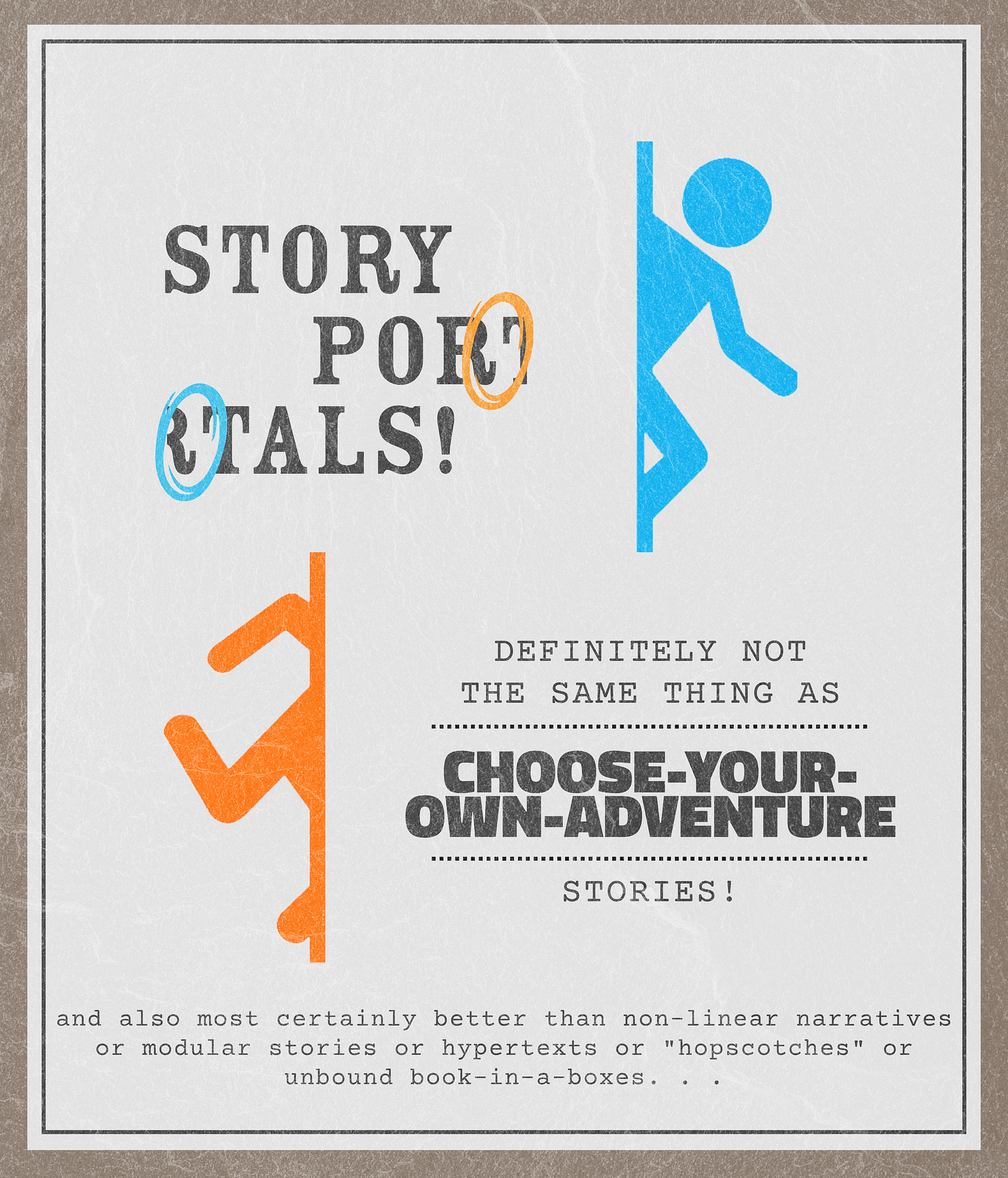Portal Story
to go from one story to another
I’ve always been a devoted follower of maximalist stories. Give me endless-expending universes with no end on the horizon; give me multiple storylines, countless characters each with their own subplots, with their parents and grandparents, and their parents’ and grandparents’ subplots.
One of the most popular words the inspirational social media accounts keeps throwing around —something I discovered after messing up my feed with an unfortunate “like”— is “sonder,” the realization of every random passerby has a life as real and vivid as your own. While reading, I would like to be in a constant state of sonder, becoming extremely aware that each of these characters —some given a name and a place within the story and some just dropped in as a he or a she or a they without any specific features or dialogues— have a solid life, a past, hopes for the future, families and friends, loves and disappointments. I want a superfluous number of stories, so that I can drown myself in them if I want to, get crushed under the weight of all these lives, gladly sacrificing a substantial amount of my time for a 1,000-page story.
This is why, when I encounter a straightforward story that can rob me of my time as shamelessly as a maximalist story, I get completely thrown off balance. The famous 2007 video game Portal is one such example.
Portal has a rather uncomplicated story: you wake up in a chamber in a lab, and an artificial intelligence named GLaDOS explains that you are part of an experiment, that if you successfully complete the upcoming puzzles, you’ll be given a cake as a reward. Then, you’re introduced to a portal gun that creates portals between two spaces: you enter through a blue portal and exit through an orange one. The story becomes infinitely entertaining thanks to the dark humor of GLaDOS and the growing doubts about its intentions and honesty with graffiti throughout the facilities stating, “The cake is a lie.” Still, how come creating portals that merely allow you to pass from one place to another become so captivating?
This question got me thinking about how to apply the portal mechanic to the short story form.
Alternative Portal Stories
My initial intention was to create portals between two separate stories: the contexts would be different, but the narrative would allow double entendre.
The first story would depict a couple having sex for the first time with all its awkwardness, unfamiliarity, and clumsiness, while the other would describe the very first human learning to walk on his feet with the same rough manner. Through the portals, the reader would be able to jump from one story to another without losing track. The stories would overlap.
The premise was promising but as I wrote, I discovered that it hardly said anything about the concept of portals, since it was lacking a connection between the form and the narrative. It felt like an unnecessary joke rather than a solid experiment that is integral to the story.
I was missing something: a portal (at least the portal in our original inspiration) does not open into another “time” but to another “place.” So, a more appropriate approach would be two stories featuring the same character moving between locations via reader-controlled portals.
Remembering my sister’s recent commencement speech (and her wise decision to ignore my suggestions for it), I thought the story may center around a speech. The protagonist would work on the text through many misguided advice, while the portals open into the inside of a pill he took to calm his nerves before going up to the platform, leading to dream sequences and flashbacks corresponding to the real events during the speech.
It felt like cheating though. You can add dream sequences anywhere regardless of the context, and still have a semi-comprehensible story. Furthermore, the idea still didn’t have much to do with portals.
What does a portal actually do? Beyond anything else, in its core, it let’s you bypass the journey and carry you directly to the destination, regardless of how unlikely the final stop might seem.
That’s how the short story equivalent of a portal should work: a story with multiple portals opening into unlikely conclusions without any further explanations about the steps that led there. After all, you don’t have to figure out the conventional route to reach your destination when using a portal gun. You’re just there.
I realize that this idea is still far from being perfect. It somehow feels like a glorified (or lazier) version of choose-your-own-adventure stories, except there is no need for a connection between the point A and B, and the only thing the reader chooses is whether to step into the portal or not.
The Rules
The original story should work as a standalone piece.
Though the mid-steps and fully developed plotlines are unnecessary, the connection between the entry and exit points of the portals should somehow make sense.
Once again, this is my attempt to turn something very simple and minimalistic into a complicated mess.


